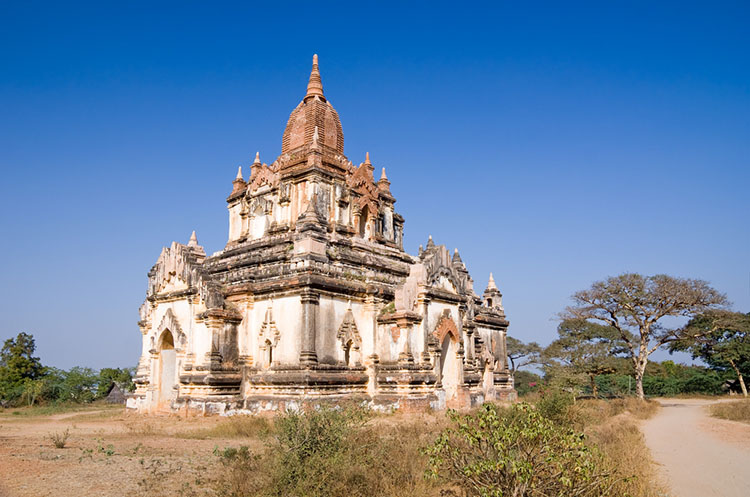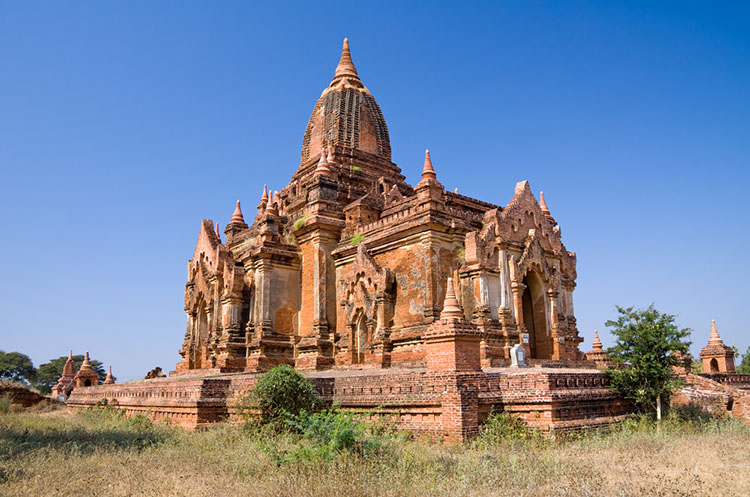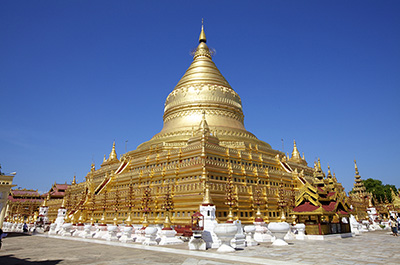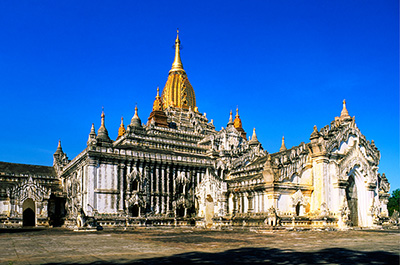
Bagan
One of Asia’s most significant historical sites
Bagan in Burma is one of the most significant archaeological sites of South East Asia. In spite of this, it is still relatively unknown because of the isolation the country has been in for decades.
10,000 Temples & pagodas
Bagan is an ancient city that was the capital of the prosperous Bagan empire that controlled most of present day Burma. At the height of empire’s power between the 11th and 13th century more than 10,000 temples and pagodas were built.
Today, about 2,200 monuments remain in various states of repair, which makes Bagan one of the most dense concentrations of temples and pagodas in the world.
The scale of Bagan can be overwhelming with its thousands of monuments as far as the eye can see. Some are very well maintained and have been restored, while others are neglected and overgrown with vegetation.

King Anawrahta, founder of the Bagan empire
While Bagan’s history goes back to the 9th century, massive temple construction began during the reign of King Anawrahta, who founded the Bagan empire in 1044. The King who was converted to Theravada Buddhism started building some of the grandest temples of Bagan, like the Shwezigon Pagoda as an act of making merit. Gradually Bagan became a center for Buddhism attracting monks from far away countries.
Temples & Pagodas of Bagan
Bagan is an excellent site to see a number of ancient monuments built in various architectural styles. The site also shows the development in architecture and design over the course of several centuries. Since many Kings wanted to leave a legacy for future generations to see, impressive monuments were erected in evolving styles and shapes.
Impressive on the outside, the interior of some of the well preserved temples matches the exterior. While some of the temples have beautiful murals and frescoes, others have magnificent Buddha images, like the Ananda temple that has four 9.5 meter high teak standing Buddha images representing the four previous Buddhas.
The city of Bagan was surrounded by walls that were built around the start of the 11th century. There used to be 12 gates, one for each sign of the Zodiac. Today only a small section of the walls remain. Only one of the original gates, the Tharabha gate is left.
UNESCO
Recognizing its importance, UNESCO has placed the Bagan archaeological zone, an area of about 104 km2 on its tentative list for consideration as a future World Heritage Site.
In 1975 a large earthquake hit Bagan, seriously damaging many of its temples. During the 1990’s the Burmese government had many of the damaged temples and pagodas restored. Unfortunately, the renovations were not done with the original architectural concepts in mind.
Bagan is located in the dry zone of Central Burma. The vast, mostly flat plain East of the Irrawaddy river receives little rain and looks like a desert at some places. Going around at the hottest time of the day can get very hot and sweaty.
There is an entrance fee of US$ 10 for every visitor to the Bagan archaeological zone. Before entering a temple, please remove shoes and socks, as these are all sacred places.
Bagan archaeological museum
A large two storey museum opened its doors in 1998. On display are numerous ancient objects discovered in the Bagan temples and pagodas, including Buddha images up to 1,000 years old, carved plaques depicting the Buddha, ancient stone inscriptions, wood carvings and stone sculptures. The museum also contains copies of murals found in several Bagan temples.
A very significant object that is on display in the museum is the Myazedi inscription dating back to 1113, which makes it the oldest known stone inscription in Burma. Standing on top of the flat roof of the building you will have good panoramic views of the Bagan plains and its thousands of monuments.
Temples & pagodas of Bagan
- Shwezigon pagoda
- Ananda pagoda
- Gawdawpalin temple
- Sulamani temple
- Thatbyinnyu temple
- Seinnyet sister temples
- Bupaya pagoda
- Mahabodhi temple
- Htilominlo temple
- Mingalazedi pagoda
- Dhammayazika pagoda
- Dhammayangyi temple
- Lawkananda pagoda
- Manuha temple
- Pyathadar temple
- Pahtothamya temple
- Myazedi pagoda
- Shwesandaw pagoda
- Gubyaukgyi temple
History
How to get to Bagan and how to get around
- Shwezigon pagoda
- Ananda pagoda
- Gawdawpalin temple
- Sulamani temple
- Thatbyinnyu temple
- Seinnyet sister temples
- Bupaya pagoda
- Mahabodhi temple
- Htilominlo temple
- Mingalazedi pagoda
- Dhammayazika pagoda
- Dhammayangyi temple
- Lawkananda pagoda
- Manuha temple
- Pyathadar temple
- Pahtothamya temple
- Myazedi pagoda
- Shwesandaw pagoda
- Gubyaukgyi temple



